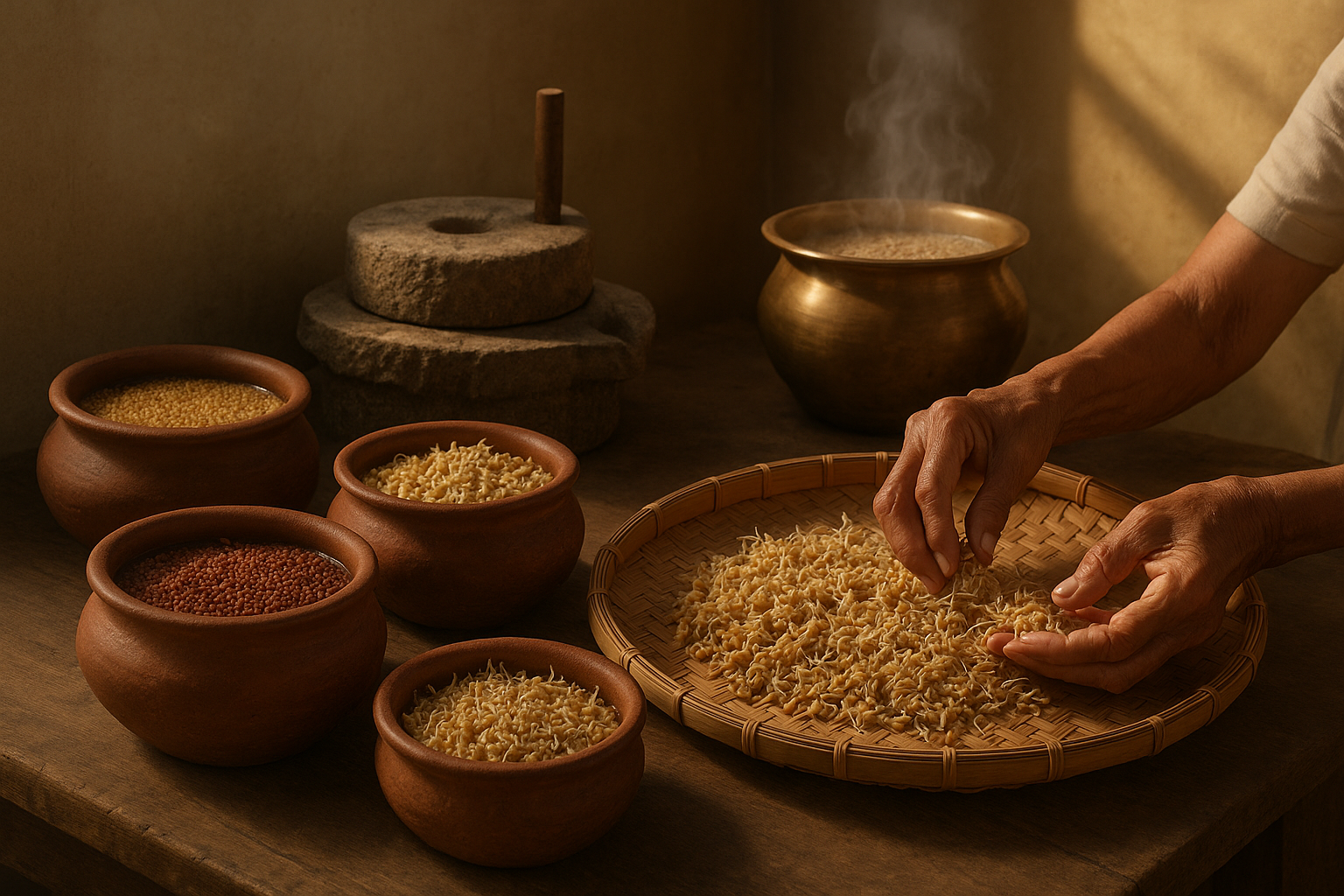🌱 What Happens When You Sprout Millets?

– Nature’s Gentle Alchemy, Now in Your Kitchen
In the world of traditional food wisdom, sprouting isn’t just a process—it’s a transformation. But what exactly happens when you sprout a millet seed?
Let’s walk through the story that unfolds in those quiet hours of soaking, waiting, and drying—and why it’s still one of the most powerful methods of nourishment known to our ancestors.
🌾 1. A Seed Awakens – Activating Life
Millets are tiny powerhouses of nutrients, but like all seeds, they guard their goodness until the right moment. When soaked in clean water, the millet begins to wake up—recognizing the moisture as a signal to begin germination.
This is when the magic begins.
💡 Phytic acid, a natural compound that blocks absorption of minerals like iron and zinc, begins to break down.
🌿 Enzymes get activated, improving nutrient bioavailability.
🌱 The millet literally begins to breathe—and becomes alive.
At this point, it’s not just a grain anymore. It’s a living, growing plant-in-the-making, full of energy and potential.
🧠 2. Smarter Nutrition – Better for Body & Brain
Sprouted millets contain higher levels of vitamins, especially the B-vitamin group like B1 (thiamine), B6 (pyridoxine), and folate. These are essential for:
Better nerve function
Focus and mental clarity
Mood stability
Child growth and development
👉 That’s why many of our community elders insisted on kanji made from sprouted grains during exam times or pregnancy.
What’s more? The protein content increases, especially in ragi and kambu. Amino acids like lysine, which are usually limited in grains, get a gentle boost during sprouting.
🌿 3. From Heavy to Light – Easy on the Gut
In today’s fast-paced lives, many complain about feeling bloated, sluggish, or tired after eating heavy grains.
That’s where sprouted millets offer relief. During sprouting:
Complex starches begin to break down into simpler, digestible forms.
Fiber softens, making it easier on the gut lining.
Natural sugars are balanced, lowering the glycemic impact.
💚 This is why sprouted millet kanji is given to toddlers, elders, and even those recovering from illness. It nourishes without burdening the body.
🔥 4. Natural Warmth, Without the Weight
In Siddha and Ayurvedic food traditions, millets are considered thermally warm but not harsh. Sprouting reduces the heat-inducing qualities of certain grains like kambu or thinai.
At Yaadhum, we sprout millets during cooler parts of the day, under indirect sunlight, just like our grandmothers did. No rush. No over-drying. Just letting nature do its part gently.
👣 5. Why Yaadhum’s Sprouted Flours Are Special
Anyone can sprout millets. But how you do it matters.
Here’s what makes Yaadhum’s sprouted flours different:
We soak only in clean, filtered water — no shortcuts.
Sprouting is done in breathable cloth or bamboo baskets, not plastic containers.
We dry the millets under the sun, turning them slowly by hand to avoid mold or spoilage.
We then grind them in stone grinders, not machines that heat and kill nutrition.
This is slow food at its best.
🌾 The result?
Flours that smell earthy.
Taste full-bodied.
And nourish you deeper than any “instant” product ever can.
🍽 How Can You Use Sprouted Millet Flours?
🫓 For Breakfast:
Sprouted Ragi Dosa
Thinai Paniyaram
Kuthiraivali Idiyappam
🥣 For Porridge:
Sprouted Kambu Kanji
Samai Kanji with jaggery
🍪 For Snacks:
Add to laddu, cookies, or even smoothies for extra punch.
These flours cook faster, taste better, and feel lighter. And you’ll feel the difference in just a week of consistent use.
In every seed lies a story.
And when you let it sprout, you give that story a voice.
At Yaadhum, we believe in listening to what nature teaches—and passing that wisdom on to your plate.